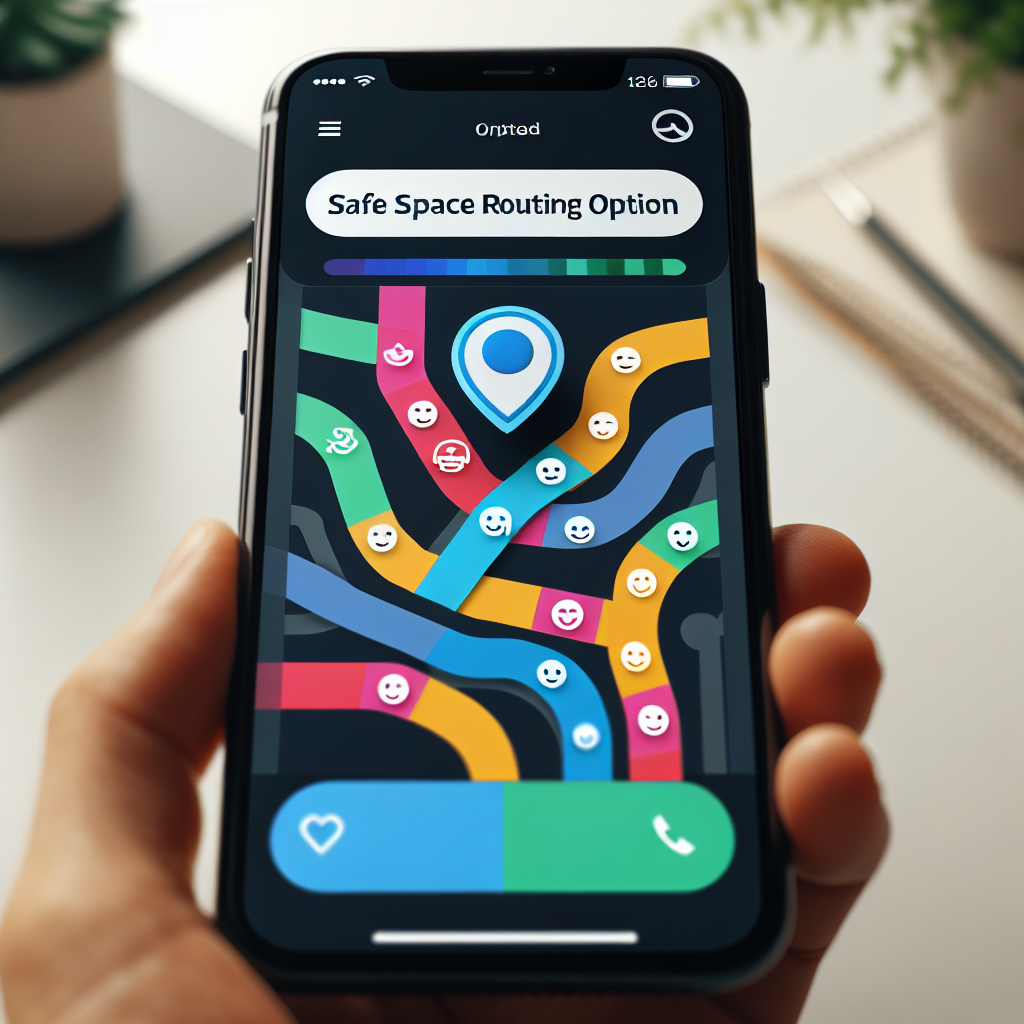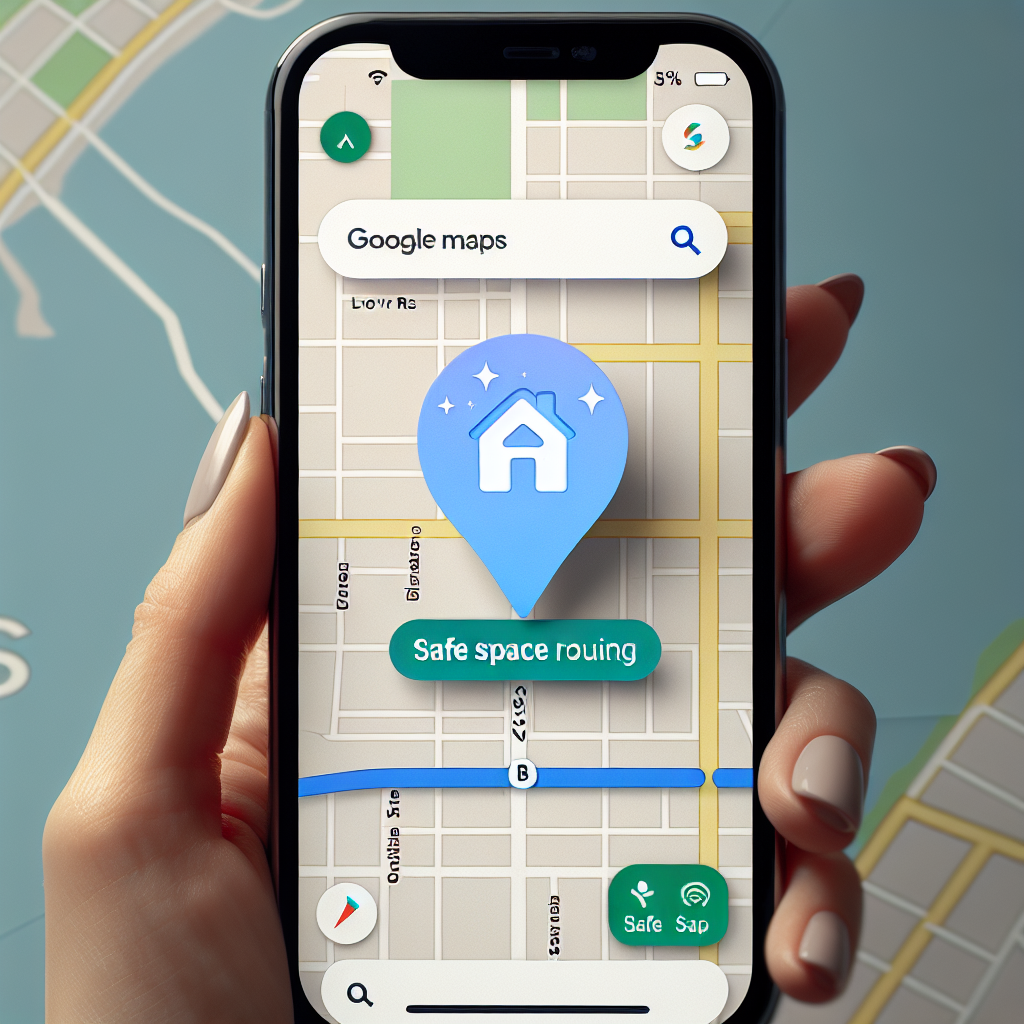Physical Address
304 North Cardinal St.
Dorchester Center, MA 02124
Physical Address
304 North Cardinal St.
Dorchester Center, MA 02124

Google Maps has become an essential tool for travelers around the world. With its accurate navigation and real-time traffic updates, it has made traveling to unfamiliar places much easier. However, for emotionally fragile travelers, navigating through new and crowded places can be overwhelming and even triggering. That’s why Google has recently introduced a new feature on its Maps app – Safe Space Routing – to cater to the needs of these travelers.
But what exactly is Safe Space Routing and why is it necessary for emotionally fragile travelers? To understand this, we must first understand the challenges that these travelers face while navigating through new places.
Emotionally fragile travelers are individuals who struggle with mental health issues such as anxiety, PTSD, or sensory processing disorders. For them, traveling to new places can be a daunting experience. The unfamiliar surroundings, crowded spaces, and loud noises can trigger their symptoms and make it difficult for them to navigate through the city.
In the past, these travelers had to rely on their own research or the help of a travel companion to find safe and comfortable routes. But with the introduction of Safe Space Routing on Google Maps, they can now easily plan their journey and avoid potential triggers.
The Safe Space Routing feature works by highlighting routes that are less crowded and have fewer potential triggers. This includes avoiding busy streets, construction sites, and areas with high levels of noise. It also takes into account the time of day, as some emotionally fragile travelers may feel more comfortable traveling during off-peak hours.
This new feature is a result of Google’s collaboration with mental health experts and advocacy groups. They have identified the need for a more inclusive and accessible navigation experience for individuals with mental health challenges. And with the increasing awareness and destigmatization of mental health, it is a step in the right direction towards creating a more inclusive society.
But why is this feature specifically targeted towards emotionally fragile travelers? Can’t it benefit everyone? While Safe Space Routing can certainly be useful for all travelers, it is especially crucial for those with mental health challenges. For them, avoiding potential triggers is not just a matter of convenience, but it can also impact their well-being and ability to function.
For instance, someone with PTSD may have a panic attack if they come across a construction site that reminds them of a traumatic event. Similarly, individuals with sensory processing disorders may struggle with loud noises and crowded spaces, making it difficult for them to navigate through the city. By providing them with a safe and comfortable route, Google Maps is not only making their journey easier but also promoting their mental well-being.
Moreover, this feature can also benefit individuals with physical disabilities. For someone with mobility issues, avoiding steep inclines or stairs can make a significant difference in their journey. By highlighting accessible routes, Google Maps is promoting inclusivity and accessibility for all travelers.
In conclusion, the introduction of Safe Space Routing on Google Maps is a significant step towards creating a more inclusive and accessible navigation experience for emotionally fragile travelers. It not only helps them plan their journey more efficiently but also promotes their mental well-being. With this feature, Google has shown its commitment to creating a more inclusive society and catering to the needs of all its users.

Google Maps has become an essential tool for travelers, providing accurate directions and real-time traffic updates. However, the popular navigation app has recently added a new feature that goes beyond just getting you from point A to point B. The Safe Space Routing option is designed to help promote mental health and well-being for emotionally fragile travelers.
This new feature was developed in collaboration with mental health experts and advocates, recognizing the growing need for safe and inclusive spaces for individuals who may be struggling with mental health issues. With the rise of mental health awareness and destigmatization, it is crucial for companies like Google to take steps towards creating a more inclusive and supportive environment for all users.
So, how does the Safe Space Routing option work? When a user inputs their desired destination, Google Maps will now provide an additional route option that takes into account safe and inclusive spaces along the way. These spaces can include parks, community centers, and other public areas that are known to promote mental well-being. This feature also takes into consideration factors such as accessibility and safety, ensuring that the suggested spaces are suitable for all individuals.
One of the main benefits of this feature is that it allows individuals to take a break from their journey and find a safe space to relax and recharge. This can be especially helpful for those who may be experiencing anxiety or other mental health challenges while traveling. By providing these safe spaces, Google Maps is not only promoting mental health but also encouraging individuals to take care of themselves while on the go.
Moreover, the Safe Space Routing option can also be beneficial for individuals who are new to a city or area. It can be overwhelming to navigate unfamiliar surroundings, and having the option to find safe and inclusive spaces can provide a sense of comfort and security. This can be particularly helpful for solo travelers or those who may feel vulnerable in new environments.
In addition to promoting mental health and well-being, this feature also highlights the importance of inclusivity and diversity. By including safe spaces for all individuals, regardless of their background or identity, Google Maps is sending a powerful message of acceptance and support. This can have a positive impact on individuals who may feel marginalized or excluded in certain spaces.
Furthermore, the Safe Space Routing option can also be a useful tool for individuals who are looking to explore their own city or neighborhood. It can be easy to get stuck in a routine and not venture out to new places. With this feature, users can discover new safe and inclusive spaces in their own community, promoting a sense of connection and belonging.
It is worth noting that this feature is not limited to just mental health support. It can also be helpful for individuals with physical disabilities or limitations. By providing accessible and safe spaces, Google Maps is promoting inclusivity and making it easier for individuals with disabilities to navigate their surroundings.
In conclusion, Google Maps’ Safe Space Routing option is a significant step towards promoting mental health and well-being for all individuals. By providing safe and inclusive spaces along with navigation directions, this feature not only helps individuals reach their destination but also encourages them to take care of their mental health while on the go. It is a powerful reminder that mental health is just as important as physical health and that inclusivity and diversity should be at the forefront of all industries.
Google Maps has become an essential tool for travelers around the world, providing accurate navigation and real-time traffic updates. However, the popular mapping service has recently taken a step towards inclusivity and accessibility by introducing a new feature called “Safe Space Routing.” This option allows users to choose a route that avoids areas that may trigger emotional distress for them, such as locations associated with past trauma or anxiety-inducing places.
This new feature has been welcomed by many travelers, especially those who identify as emotionally fragile or have mental health conditions. It not only provides a sense of safety and control but also promotes inclusivity in the travel industry. Let’s explore the impact of Google Maps’ Safe Space Routing on inclusivity and accessibility in travel.
First and foremost, this feature acknowledges the fact that not all travelers have the same needs and experiences. While some may have no problem navigating through crowded areas or busy streets, others may find it overwhelming and triggering. By offering a safe space routing option, Google Maps is recognizing the diverse needs of its users and catering to them.
Moreover, this feature promotes inclusivity by making travel more accessible for individuals with mental health conditions. Many people with anxiety, PTSD, or other mental health issues may avoid traveling to certain places due to the fear of encountering triggers. With safe space routing, they can now plan their trips with more confidence and ease, knowing that they can avoid areas that may cause emotional distress.
In addition to promoting inclusivity, this feature also has the potential to make travel more accessible for individuals with physical disabilities. For example, someone with a physical disability may find it challenging to navigate through a busy street or a steep hill. By avoiding these areas, they can choose a route that is more accessible for them, making their travel experience more comfortable and enjoyable.
Furthermore, this feature can also have a positive impact on the tourism industry. Many travelers may avoid visiting certain destinations due to their reputation for being unsafe or triggering. With safe space routing, these destinations can now be seen as more welcoming and inclusive, encouraging more people to visit and boosting tourism.
However, some critics argue that this feature may limit the user’s exposure to different cultures and experiences. By avoiding certain areas, travelers may miss out on the authentic and diverse aspects of a destination. While this is a valid concern, it is essential to remember that this feature is optional, and users can still choose to explore these areas if they wish to do so.
Moreover, Google Maps’ safe space routing is not a perfect solution, and there are still some limitations. For example, the feature relies on user-generated data, which may not always be accurate or up-to-date. Additionally, it may not be available in all areas, especially in remote or less popular destinations.
In conclusion, Google Maps’ safe space routing is a significant step towards inclusivity and accessibility in the travel industry. It not only caters to the diverse needs of its users but also promotes a more inclusive and welcoming environment for travelers. While there are some limitations, this feature has the potential to make travel more accessible and enjoyable for individuals with mental and physical disabilities. As technology continues to advance, we can hope to see more initiatives like this that prioritize inclusivity and accessibility in the travel industry.